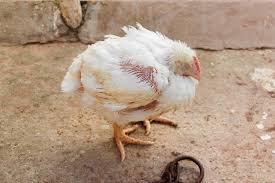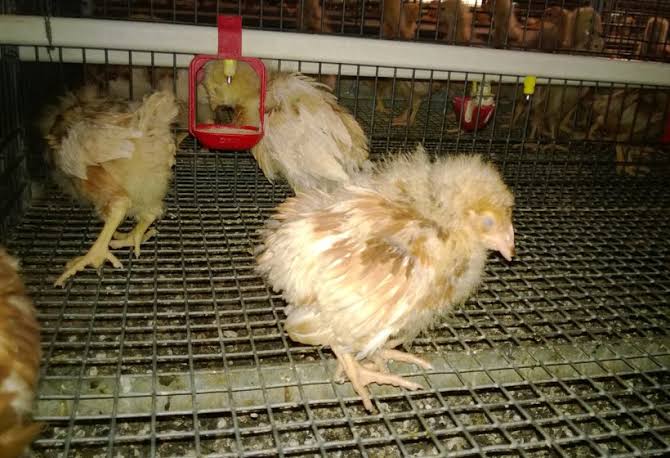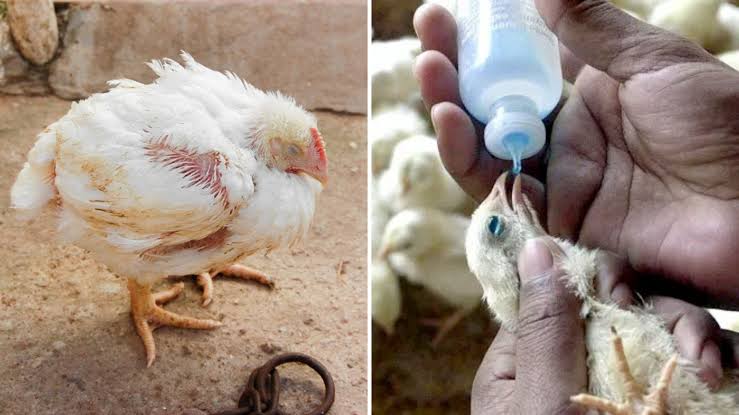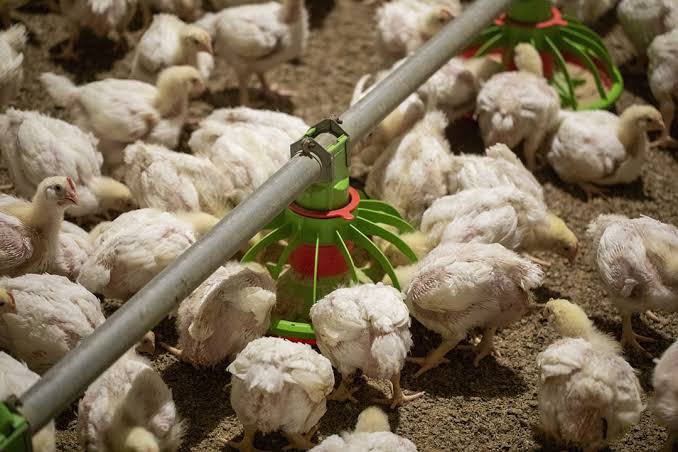Infectious bursal disease, commonly known as Gumboro disease, is a highly contagious viral infection that affects chickens, particularly young ones. The scientific name for this disease is Avibirnavirus. It primarily targets the bursa of Fabricius, an important organ in the immune system of birds.
This viral infection poses a significant threat to poultry farming, causing economic losses and impacting the overall health of chicken flocks. The virus responsible for Gumboro disease belongs to the Birnaviridae family, and it is characterized by its ability to survive in the environment for extended periods, making control measures challenging.
Chickens affected by Infectious bursal disease often exhibit clinical signs such as depression, reluctance to move, and ruffled feathers. Additionally, a notable symptom is the swelling of the bursa of Fabricius, leading to immunosuppression and increased susceptibility to other infections. The severity of the disease can vary, ranging from subclinical cases with minimal symptoms to acute outbreaks resulting in high mortality rates.
Transmission of the virus occurs through the fecal-oral route, meaning that contaminated feces play a crucial role in spreading the infection among birds. Infected birds shed the virus in their droppings, contaminating the environment and exposing susceptible chickens. The virus can also be transmitted indirectly through contaminated equipment, clothing, or even by wild birds.
Preventing and controlling Gumboro disease is essential for maintaining the health and productivity of poultry flocks. Vaccination is a key strategy in managing the disease, with different types of vaccines available to provide immunity to susceptible chickens. Proper biosecurity measures, such as maintaining a clean and sanitized environment, limiting exposure to wild birds, and controlling the movement of people and equipment, are crucial in preventing the introduction and spread of the virus.
Despite efforts to control Gumboro disease, challenges persist due to the virus’s ability to mutate and develop new strains. Ongoing research and surveillance are essential to understand the evolving nature of the virus and to adapt control measures accordingly.
However, Infectious bursal disease, or Gumboro disease, poses a significant threat to the poultry industry. Understanding the virus’s characteristics, implementing effective vaccination programs, and maintaining strict biosecurity measures are crucial in preventing and controlling outbreaks. Continuous research and collaboration within the poultry community are essential to stay ahead of the challenges posed by this infectious viral disease.
Read Also: Best Snail Rearing Stocking Density for Best Results
Animals Affected by Infectious Bursal Disease (Avibirnavirus)

Infectious bursal disease, or Gumboro disease, primarily affects chickens, especially those in the early stages of life. Young chicks are particularly susceptible to the virus, and the disease can have a significant impact on poultry farming. The bursa of Fabricius, a critical organ in the immune system of birds, is the primary target of the virus, leading to immunosuppression.
While chickens are the primary hosts, other birds in the poultry family, such as turkeys and ducks, may also be affected to a lesser extent. However, the severity of the disease is most pronounced in chickens.
It’s important to note that other avian species, such as quails, pheasants, and guinea fowl, can also be infected by related strains of the virus, but the clinical signs and impact may differ. These species, though, are generally considered less susceptible compared to chickens.
In the broader context of animal health, Gumboro disease is not known to affect mammals or non-avian species. The specificity of the virus to birds, particularly chickens, underscores the importance of implementing targeted control measures within poultry farming to minimize the impact of this infectious disease.
Damages Caused by Infectious Bursal Disease

Infectious bursal disease, or Gumboro disease, can cause significant damages in poultry farming, impacting both the health of individual birds and the overall economic viability of poultry operations.
1. Morbidity and Mortality: Gumboro disease can lead to high morbidity rates, with a large number of birds within a flock becoming infected. The morbidity is often accompanied by increased mortality, especially in severe cases. This can result in substantial economic losses due to the death of valuable poultry.
2. Immunosuppression: The virus targets the bursa of Fabricius, a crucial organ in the immune system of birds. This leads to immunosuppression, making affected chickens more susceptible to secondary infections. This weakened immune response can result in prolonged recovery times and increased vulnerability to other diseases, further amplifying losses.
3. Reduced Growth and Productivity: Infected birds may experience stunted growth and reduced feed efficiency. The overall productivity of the flock is compromised, affecting the quality and quantity of meat and eggs produced. This can have a direct impact on the economic returns for poultry farmers.
4. Vaccination Costs: To control and prevent Gumboro disease, poultry farmers often invest in vaccination programs. The costs associated with purchasing and administering vaccines, along with the potential need for booster shots, contribute to the financial burden of managing the disease.
5. Biosecurity Measures: Controlling the spread of Gumboro disease requires strict biosecurity measures, including proper sanitation, limiting exposure to contaminated environments, and restricting movement of people and equipment. Implementing and maintaining these measures incur additional costs for poultry operations.
6. Impact on Market Access: Outbreaks of Gumboro disease can lead to restrictions on the movement of poultry products, both nationally and internationally. This can result in decreased market access for affected farms, affecting their ability to sell poultry and related products.
7. Management Challenges: Dealing with Gumboro disease requires careful management and monitoring of poultry flocks. Farmers may need to cull infected birds, leading to a reduction in the overall size of the flock. The constant threat of outbreaks also necessitates ongoing surveillance and disease management efforts.
The damages caused by Gumboro disease extend beyond the immediate health impact on birds to encompass economic losses, reduced productivity, and increased operational costs for poultry farmers. Implementing effective prevention and control measures, including vaccination and biosecurity practices, is crucial to minimizing the negative consequences associated with this infectious disease.
Read Also: Seasonal and Daily Management Practices for Snail
Control and Preventive Measures

Effective control and preventive measures are crucial to managing Infectious bursal disease (Gumboro disease) in poultry farming. Here are key strategies:
1. Vaccination Programs: Implementing a robust vaccination schedule is essential. Various Gumboro vaccines are available, and choosing the right type and timing is critical. Vaccination should begin early in the life of the chicks to ensure sufficient immunity.
2. Biosecurity Practices: Strict biosecurity measures help prevent the introduction and spread of the virus. This includes limiting access to the poultry farm, maintaining cleanliness, and establishing hygiene protocols for personnel, equipment, and vehicles entering and leaving the premises.
3. Isolation of New Birds: Newly acquired birds should be quarantined and monitored before introducing them to the existing flock. This helps prevent the introduction of the virus from external sources.
4. Sanitation and Disinfection: Regular cleaning and disinfection of poultry facilities, equipment, and vehicles are essential. The virus can survive in the environment, so thorough sanitation practices reduce the risk of contamination.
5. All-in, All-out Management: Adopting an all-in, all-out system involves raising and managing each batch of birds separately. This helps break the disease cycle and reduces the risk of contamination between flocks.
6. Monitoring and Surveillance: Regular monitoring of bird health, coupled with surveillance for clinical signs, can help detect potential outbreaks early. Prompt identification allows for timely intervention and minimizes the spread of the virus.
7. Genetic Selection: Some poultry breeds may have increased resistance to Gumboro disease. Selecting breeds with genetic resistance traits can be a preventive measure. Consultation with poultry geneticists or breeders can aid in making informed decisions.
8. Education and Training: Educating farm personnel about Gumboro disease, its transmission, and preventive measures is crucial. Proper training ensures that everyone involved in poultry farming understands and follows biosecurity protocols.
9. Proper Waste Management: Disposal of infected material, including carcasses, should be carried out properly to prevent environmental contamination. This includes secure burial or incineration methods.
10. Consultation with Veterinarians: Regular consultation with poultry veterinarians is essential. Veterinarians can provide guidance on vaccination strategies, biosecurity measures, and overall flock health management.
11. Record Keeping: Maintaining detailed records of vaccination schedules, flock movements, and health observations can aid in disease management. It facilitates traceability and helps identify patterns that may indicate potential issues.
By implementing a combination of these control and preventive measures, poultry farmers can significantly reduce the impact of Gumboro disease on their flocks. It is important to tailor these strategies to the specific conditions of each poultry farm and seek professional advice when needed.
Frequently Asked Questions (FAQs) About Infectious Bursal Disease (Avibirnavirus)
Q1: What is Infectious bursal disease (Gumboro disease)?
A: Infectious bursal disease, commonly known as Gumboro disease, is a highly contagious viral infection affecting chickens. It primarily targets the bursa of Fabricius, a crucial organ in the bird’s immune system.
Q2: How is Gumboro disease transmitted?
A: The virus is primarily transmitted through the fecal-oral route. Infected birds shed the virus in their droppings, contaminating the environment. Additionally, indirect transmission can occur through contaminated equipment, clothing, and even by wild birds.
Q3: What are the clinical signs of Gumboro disease?
A: Clinical signs include depression, reluctance to move, ruffled feathers, and swelling of the bursa of Fabricius. Severe cases may lead to high morbidity and mortality rates in affected flocks.
Q4: Which birds are most susceptible to Gumboro disease?
A: Chickens, especially young chicks, are the primary hosts and are highly susceptible. Turkeys and ducks may also be affected, albeit to a lesser extent. Other avian species like quails, pheasants, and guinea fowl can be infected by related strains.
Q5: Can Gumboro disease affect humans or other animals?
A: No, Gumboro disease is specific to birds, particularly chickens, and does not affect humans or non-avian species.
Q6: How can Gumboro disease be prevented?
A: Preventive measures include implementing a vaccination program, strict biosecurity practices, isolation of new birds, sanitation and disinfection, and all-in, all-out management. Regular monitoring, genetic selection, and proper waste management also contribute to prevention.
Q7: What is the economic impact of Gumboro disease on poultry farming?
A: Gumboro disease can lead to significant economic losses due to increased mortality, reduced growth, decreased productivity, and the costs associated with vaccination, biosecurity measures, and disease management.
Q8: Can recovered birds from Gumboro disease be carriers?
A: Yes, recovered birds can become carriers and shed the virus intermittently. It underscores the importance of proper management and ongoing monitoring even after an outbreak.
Q9: Is there a cure for Gumboro disease?
A: There is no specific cure for Gumboro disease. Management focuses on prevention through vaccination, biosecurity, and other control measures. Supportive care for affected birds may include measures to address secondary infections.
Q10: How often should vaccination against Gumboro disease be carried out?
A: The frequency of vaccination depends on the specific vaccine used and the risk factors on the farm. Consultation with a poultry veterinarian is crucial to establishing an appropriate vaccination schedule.
Read Also: 9 Impressive Health Benefits of Onions

